Exhibition: "A Brief Guide to Investigating War Crimes” by Ron Haviv - VII Foundation / 17.10.2025 / 18:00 / Barabar Centre - Grand 4th Floor /
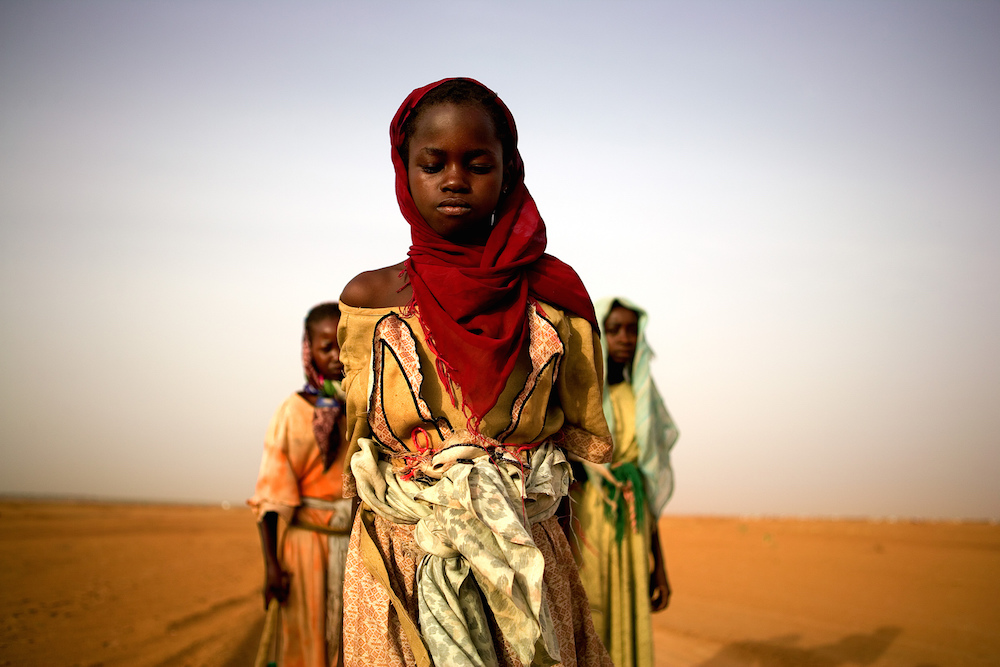
Photo: © Ron Haviv – VII Foundation / Young Darfuri girls leave a camp for internally displaced persons to gather firewood. Girls as young as 8 have been raped, attacked and killed trying to get wood. Darfur, Sudan, 2005
Exhibition: “A Brief Guide to Investigating War Crimes” by Ron Haviv
World-Renowned Photojournalist Ron Haviv Presents “A Brief Guide to Investigating War Crimes”
Internationally acclaimed photojournalist and co-founder of the VII Foundation, Ron Haviv, in collaboration with the Global Investigative Journalism Network (GIJN), presents the powerful exhibition “A Brief Guide to Investigating War Crimes.”
Curated by Haviv himself, the exhibition draws from the GIJN’s definitive guide for journalists covering war crimes, and features evocative and hard-hitting imagery by members of the prestigious VII Foundation. Through a compelling visual narrative, the exhibition explores the brutal realities of armed conflict, the mechanisms of war crimes, and their long-lasting human and societal impacts.
“A Brief Guide to Investigating War Crimes” underscores the critical role of investigative journalism, human rights advocacy, and legal accountability in uncovering the truth. It stands as both a tribute to courageous reporting and a call to action for justice and transparency in times of war.
RON HAVIV
Ron Haviv is an Emmy-nominated filmmaker and an award-winning photojournalist. He co-founded VII Photo Agency and The VII Foundation, where he currently serves as a director. He is dedicated to documenting conflict and raising human rights issues around the globe.
Haviv’s first photography book, Blood and Honey: A Balkan War Journal, was called “One of the best non-fiction books of the year,” by The Los Angeles Times and “A chilling but vastly important record of a people’s suffering” by Newsweek. His other monographs are Afghanistan: The Road to Kabul, Haiti: 12 January 2010, The Lost Rolls and Shadow of Memory.
Haviv has produced an unflinching record of the injustices of war covering over twenty-five conflicts and his photography has had singular impact. His work in the Balkans, which spanned over a decade of conflict, was used as evidence to indict and convict war criminals at the international tribunal in The Hague. President George H.W Bush cited Haviv’s chilling photographs documenting paramilitary violence in Panama as one of the reasons for the 1989 American intervention.
His work is in the collections of The Getty, Eastman House and Museum of Fine Arts, Houston amongst others and has been seen in numerous other museums and galleries, including the Louvre, United Nations, Council on Foreign Relations, Fotografiska, and the International Center of Photography.
Haviv has co-created multi-platform projects for Doctors Without Borders’ DR Congo: The Forgotten War and Starved for Attention, Unicef’s Child Alert for Darfur and Sri Lanka and the International Committee of the Red Cross’s World at War. His commercial clients include Ad Council, American Express, BAE, Canon USA, ESPN, IBM and Volkswagen.
Haviv is the central character in six documentary films, including National Geographic Explorer’s Freelance in a World of Risk, in which he speaks about the dangers of combat photography, including his numerous detentions and close calls. He has provided expert analysis and commentary on ABC World News, BBC, CNN, NPR, MSNBC, NBC Nightly News, Good Morning America, and The Charlie Rose Show. He has written opinion pieces for the Washington Post and The New York Times and spoken at TEDx along with numerous other lectures at Universities and conferences.
He is currently co-directing two documentaries, Biography of a Photo and Picasso of Harlem.
Exhibition: "MONUMENTAL": The Dome of the Rock by Ziyah Gafic and Notre-Dame de Paris by Tomas van Houtryve
/ 18.10.2025 / 18:00 / Gallery of Fine Arts Academy /
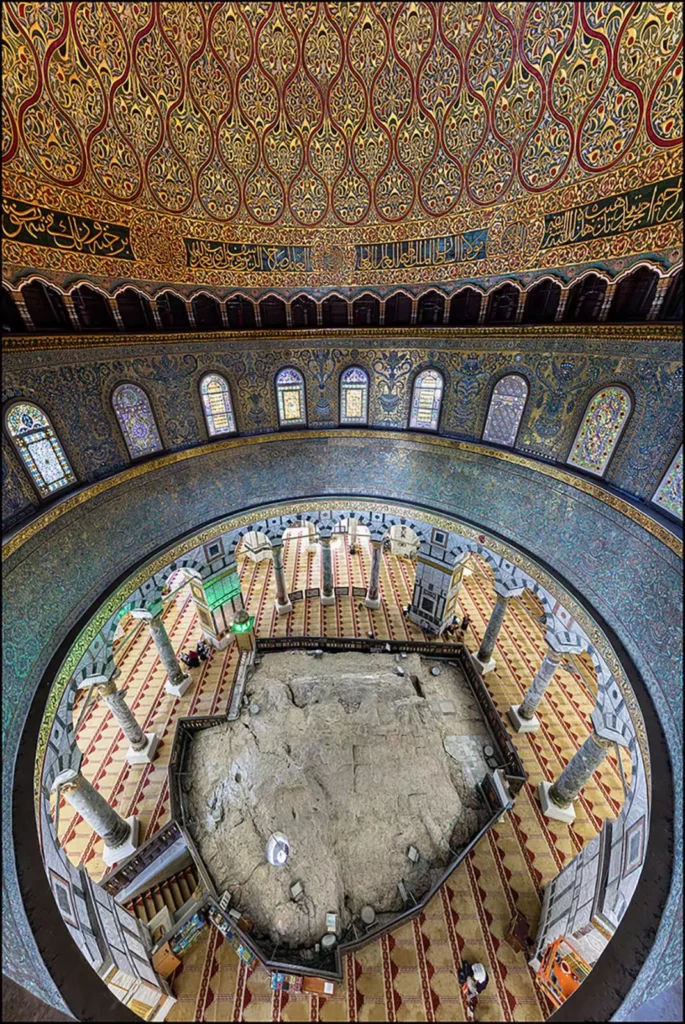
Photo: © Ziyah Gafić – VII Foundation
Exhibition: MONUMENTAL: The Dome of the Rock by Ziyah Gafic and Notre-Dame de Paris by Tomas van Houtryve
A project of The VII Foundation, MONUMENTAL is an exhibition that fosters discussions on faith, national identity, power politics, social cohesion, colonization, division, and political violence through the symbolism of two of the world’s most important and iconic religious buildings: The Dome of the Rock, in Jerusalem, and Notre-Dame de Paris.
The VII Foundation’s contributing photographers Ziyah Gafić and Tomas van Houtryve had unprecedented access to these iconic religious structures between 2019 and 2023.
The Dome of the Rock was completed in A.D. 691 and is the world’s oldest surviving example of Islamic architecture. Today, it is a political lightning rod between Israel, the Palestinians, and the Muslim world.
Since its completion in A.D. 1260, Notre-Dame has been the stage for grand political statements and expressions of divine human authority. The cathedral has a presence in French cultural and political life that reaches far beyond faith and exceeds that of any other architectural structure in the country.
The exhibition is curated by Yonola Viguerie, Gary Knight and James B. Wellford.
ZIYAH GAFIC
Ziyah Gafic (b. 1980, Bosnia) was born in Sarajevo and grew up during the siege of the city. He briefly became a refugee in Italy before returning home, crawling through a tunnel under Sarajevo airport to his father, a fighter in the city’s resistance. His project “Quest for Identity” is a catalog of objects found in mass graves, a document of crimes, and validation and restitution of the individual lives of his neighbors and countrymen who were murdered by Serbian soldiers and paramilitaries before being buried anonymously in mass graves.
Ziyah is Director of The VII Foundation, Sarajevo and an award-winning photojournalist, author, TED speaker and contributor to National Geographic magazine. His photography focuses on societies locked in a perpetual cycle of violence and Muslim communities around the world. Over the past 25 years, he covered major events in the Middle East, Caucasus, Arabian peninsula, and Asia, and his work has received some of the most coveted prizes in photography from World Press Photo, Visa pour l’image, Les Rencontres d’Arles, Prince Claus Fund, National Geographic Society and the Pulitzer Center on Crisis Reporting.
TOMAS van HOUTRYVE
Tomas van Houtryve is an artist, photographer and author who engages critical issues around the world. His major works interweave contemporary concepts, investigative journalism and metaphor, occupying the intersection between art and pure documentary. Many of his projects push the technical limits of photography, from 19th century chemical processes to thermal imaging and Augmented Reality.
Van Houtryve’s work is included in the permanent collections of the International Center of Photography Museum (ICP), the Nelson-Atkins Museum of Art and the Museum of Contemporary Photography in Chicago (MoCP). He is the author of the book Behind the Curtains of 21st Century Communism. His groundbreaking Blue Sky Days series about America’s drone wars was published in Harper’s in 2014 as the largest photo portfolio in the magazine’s 164-year history.
Van Houtryve has been honored with over a dozen top awards, including the ICP Infinity Award, World Press Photo, POY Photographer of the Year and the Bayeux Prize for War Correspondents. He is frequently invited for public speaking engagements and has appeared on the BBC, CNN, MSNBC, ARTE and France 5. He is a CatchLight Pulitzer Fellow.
Exhibition: "Élévations" by Éric Bouvet - VII Foundation
/ 17.10.2025 / 18:00 / Grand 3rd Floor /
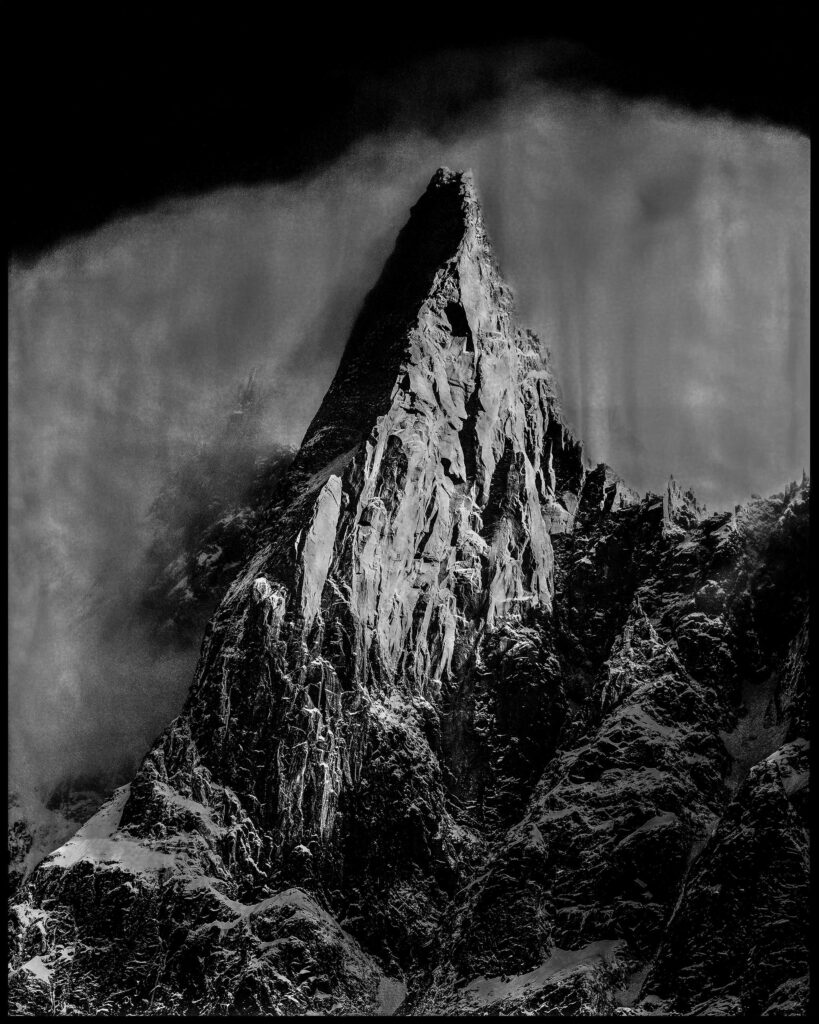
Photo: © Éric Bouvet / VII Foundation
Exhibition: “Élévations” by Éric Bouvet
Opening on Octobar 17, 2025, at the Barabar Centre, Élévations by Éric Bouvet is an exhibition of large format photographs that capture the majestic landscapes of the Alps. While the mountains stand as timeless symbols of natural beauty, Bouvet’s images also serve as a subtle commentary on their vulnerability in the face of climate change and environmental degradation.
Using 19th century photography techniques, Bouvet slows down the photographic process, allowing the viewer to engage deeply with the subject matter. His images invite reflection on the delicate balance between humanity and the natural world, portraying landscapes that are at once enduring and fragile. The exhibition not only showcases the grandeur of the Alps but also subtly points to the growing environmental challenges these regions face, including glacial melting and the impact of rising temperatures.
Bouvet’s work prompts consideration of our relationship with the environment, highlighting the need for greater awareness and action in the face of global climate change. His photographs stand as both a celebration of nature’s beauty and a call to preserve it, inviting viewers to reflect on the pressing environmental issues of our time.
This exhibition was part of a broader initiative by The VII Foundation and the Institut-Français in BiH, supported by UNESCO through the “Culture and Creativity for the Western Balkans” (CC4WBs) project funded by the European Union, to encourage dialogue on environmental sustainability and the role of visual storytelling in addressing such critical issues.
This exhibition is hosted by FOTOIST – International Photography Festival in collaboration with The VII Foundation.
ÉRIC BOUVET
Éric Bouvet (b. 1961, France) lives and works on the edge. When he is not carrying 20kgs of 8×10 large format film cameras on his back to the highest Alpine peaks, he is a tireless photographer of conflict, social upheaval, politics, and culture. His photographic oeuvre is one of the most diverse in VII. Eric is a photographer’s photographer lauded by his colleagues for his courage, humanity, and humility for over 42 years in some of the most aggressive and violent territories, from the fall of the Berlin Wall to the war in Ukraine
Exhibition: "USA 3.0" - VII Foundation
/ 17.10.2025 / 18:00 / Grand Squere - Outdoor /
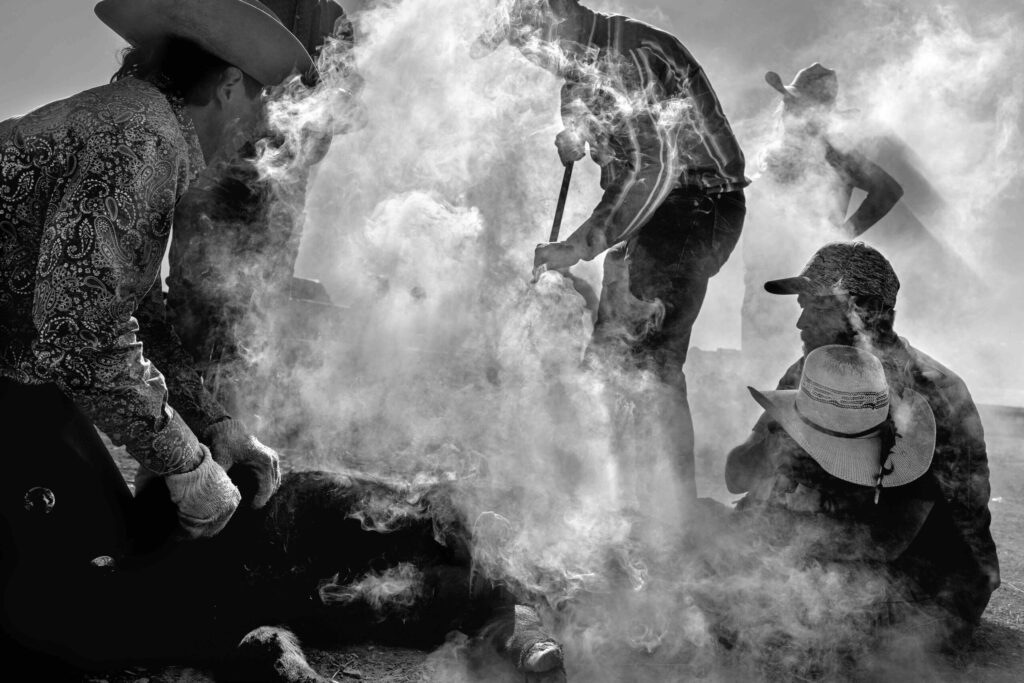
Photo: © Danny Wilcox Frazier / VII Foundation
Exhibition: “USA 3.0” by VII Foundation
Curated by: Ron Haviv and Danny Wilcox Frazier
Featuring: Doug Barrett, Jon Cherry, Jordan Gale, Ashley Gilbertson, Ron Haviv, Brooklynn Kascel, Ed Kashi, Joachim Ladefoged, Christopher Lee, Ilvy Njiokiktjien, Nick Rohlman, Joseph Silva, Nichole Sobecki, Maggie Steber, Sara Terry, Nolan Trowe, Anthony Vazquez, Danny Wilcox Frazier, James Year, Adriana Zehbrauskas
USA 3.0 is a visual journalism project that captures and interprets American history in real time, marking this historical period and preserving a record of the past and present and for future generations.
ABOUT ARTISTS:
Doug Barrett is an internationally recognized photographer and cinematographer in Kansas, covering the Midwest. He works to disrupt narratives that perpetuate inequality and underprivileged voices across race, gender, and ability. The perspectives and experiences of these communities shape a more inclusive world.
Jon Cherry is a photojournalist based in Louisville, Kentucky. Jon was awarded the 2022 Pulitzer Prize for Breaking News Photography as part of the Getty Images team. Cherry aims to capture the true spirit of America while developing his storytelling craft through analysis of the truths that define our time.
Jordan Gale is an American photographer based in Portland, Oregon, specializing in editorial and narrative photography. His work often examines human relationships, community, and current events.
Ashley Gilbertson is an Australian photographer and writer living in New York City, recognized for his critical eye and unique approach to social issues. For over 20 years, Gilbertson focused on refugees and conflict, an interest that, in 2002, led him to Iraq. His work from that country was awarded the Robert Capa Gold Medal, and in 2007, Gilbertson’s book, Whiskey Tango Foxtrot, was released, becoming a bestseller.
Ron Haviv is an Emmy-nominated filmmaker and an award-winning photojournalist. He co-founded VII Photo Agency and The VII Foundation, where he serves as a director. He is dedicated to documenting conflict and raising global human rights issues.
Brooklynn T. Kascel is a queer documentary photographer from Iowa who makes nonfiction photographic essays. Working within the sociological framework of human ecology, Brooklynn interacts with themes of gender, queerness, intimacy, Christianity, and the family unit to study social systems.
A powerhouse of energy and creativity, Ed Kashi is a photojournalist and filmmaker dedicated to documenting the social and geopolitical issues that define our times. In addition to photography and filmmaking, Kashi is an educator and leading voice in photojournalism, documentary photography, and visual storytelling.
Joachim Ladefoged is one of VII’s most inventive and creative photographers. His highly accomplished career has seen him master complex, violent news stories, commercial assignments, daily news, and rich, vibrant, and spectacular feature stories. Joachim is credited with being one of the driving forces behind the new wave of Danish photojournalism.
Ilvy Njiokiktjien is an independent photographer and multimedia journalist based in the Netherlands. She has worked in many parts of the world, focusing on Africa. As a news and documentary photographer, she covers current affairs and contemporary social issues. She was born in the Netherlands, and after leaving school, studied for a year in South Dakota (USA) before returning home to study journalism and photography.
Nick Rohlman is a documentary photographer and photojournalist in Eastern Iowa. He works as a staff photojournalist at the Cedar Rapids Gazette and has covered everything from presidential elections to the local decorative mustard contest.
Joseph Silva is a United States Navy Veteran and a Documentary Fine Art Photographer. Silva has spent time documenting deported veterans, from the Vietnam War to the conflicts of today.
Nichole Sobecki is an American photographer and filmmaker based in Nairobi, Kenya. Nichole has been recognized by Pictures of the Year, the One World Media Awards, and the Alexandra Boulat Award for Photojournalism, and her work has been exhibited internationally. Sobecki aims to create photographs and films that demand consideration for the lives of those represented–their joys, challenges, and ultimately, their humanity.
Maggie Steber, a documentary photographer specializing in humanistic stories, has worked in 67 countries. Her honors include a grant from the Guggenheim Foundation, the Leica Medal of Excellence, World Press Photo Foundation, the Overseas Press Club, Pictures of the Year, the Medal of Honor for Distinguished Service to Journalism from the University of Missouri, the Alicia Patterson Grant, the Ernst Haas Grant, and a Knight Foundation grant for the New American Newspaper project. Steber has worked in Haiti for three decades. Aperture published her monograph, Dancing on Fire.
Sara Terry is an award-winning documentary photographer and filmmaker known for covering post-conflict stories. She is a Guggenheim Fellow for her long-term project, Forgiveness and Conflict: Lessons from Africa. Her first long-term post-conflict work, After Bosnia: Bosnia’s Road to Peace, led her to found The Aftermath Project on the premise that “War is Only Half the Story.” An accomplished speaker on aftermath and visual literacy issues, her lectures include a TedX talk, “Storytelling in a Post-Journalism World.” Her third documentary, A Decent Home, concerns mobile home parks and the affordable housing crisis.
Nolan Trowe has focused on stories around disability. He suffered a spinal cord injury at the L-1 level and was diagnosed with incomplete paraplegia on June 21, 2016. He is interested in “exploring the mystery of what it means to be a human being, more than any other thing.”
Anthony Vazquez is a photojournalist for the Chicago Sun-Times, concentrating on the city’s south and west sides. Anthony became interested in journalism while enlisted in the Marine Corps, and after his service, pursued journalism at the University of Iowa, where he served as photo editor of The Daily Iowan.
Documentary photographer and filmmaker Danny Wilcox Frazier focuses on marginalized communities in and outside the United States. His work is centered on the Midwest and his home state of Iowa and is born from a commitment and love for his neighbors and community. He photographs people struggling to survive the economic shift that has devastated rural communities throughout the parts of America disparaged and misunderstood by so many in the USA and abroad.
James Year is a documentary and editorial photographer who specializes in still photography. He originates from a rural, working-class background and has six years of professional aviation experience while enlisted in the United States Air Force. He is currently focusing on projects that focus on the intersection of labor, technology, and the environment.
Adriana Zehbrauskas is a Brazilian documentary photographer based in Phoenix, Arizona. Her work focuses on issues related to migration, religion, human rights, climate change, and underrepresented communities. Her photographs have been featured in numerous international publications. She is the Howard G. Buffet Visiting Professor of Visual Journalism at the Walter Cronkite School of Journalism and Mass Communication at Arizona State University.
Exhibition: "Killing Culture" by Hrvoje Polan
/ 17.10.2025 / 18:00 / Grand 5th Floor /
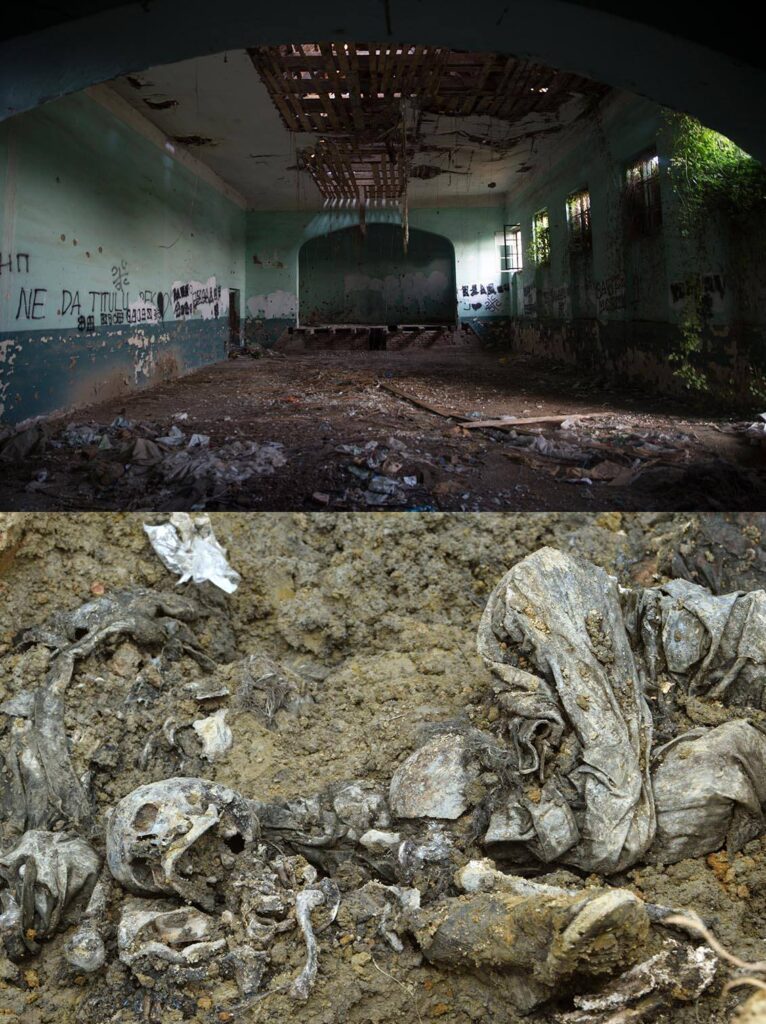
Photo: © Hrvoje Polan Photohraphs – Eastern Bosnia’s Pilica culture hall, place of the worst atrocities done by Bosnian Serbs under command of Radovan Karadžić, where more than 500 non-Serbs were tortured and killed in 1995; some of their bodies remains found years later at nearby Crni Vrh mass grave, possibly the biggest one in Bosnia so far.
Exhibition: “Killing Culture” by Hrvoje Polan
During the Yugoslav Wars of the 1990s, cultural venues such as theaters, museums, and music schools were transformed into sites of detention, torture, and execution. Today, these places remain silent, offering no acknowledgment of their violent past, as if the atrocities and victims have been erased from memory. The photography exhibition and photo-monograph project Killing Culture confronts this silence. It opens a vital conversation about the misuse of cultural spaces during the war and how these acts deepened divisions among ethnic groups. Photographer Hrvoje Polan documented 24 such venues across Bosnia, Croatia, and Kosovo for the Killing Culture exhibition. Presented throughout the Balkans, this exhibition fosters dialogue about the war’s impact, the weaponization of culture, and the urgent need for memorialization. The current exhibition is purposefully held at the former Grand Hotel, where Serbian paramilitary units were stationed during the Kosovo war 1999. The event is organized by FOTOIST and Pro Peace. It is accompanied by a discussion exploring the misuse of culture during the conflict and the ongoing significance of memorials in the Balkans today.
HRVOJE POLAN
Hrvoje Polan (1971–2019) was a renowned Croatian photojournalist whose uncompromising visual storytelling left an indelible mark in both regional and international media. Polan began his career in the 1990s at Feral Tribune, where he became a fixture in photojournalism during Croatia’s turbulent wartime and post‑war period. Alongside news coverage, he documented Croatia’s vibrant rock scene during that decade. He later worked for major international agencies Reuters and Agence France‑Presse, reporting from global conflict zones, including the former Yugoslavia, Albania, Iraq, Gaza, and the West Bank. His photographs were published by leading media outlets such as the International Herald Tribune, The Guardian, Newsweek, and Time. One of Polan’s photographs was selected for inclusion in the MoMA exhibition “100 Best Pictures of the Decade 1990–2000” in New York. In later years, Polan worked as a freelance photojournalist, continuing to deliver powerful documentary photo essays from conflict areas, particularly Gaza, until shortly before his death. He faced threats at home when his documentary photographs from the post Operation Storm era in Croatia were considered controversial. In 2015, his exhibition Three Stories of Absurdity was removed without explanation two days after opening at the PRESS Film Festival in Kostajnica, apparently due to unease among local political elites; the exhibition included images from Gaza and other conflict zones. Polan’s final major project was the photomonograph Behind the Seven Camps – From Crimes of Culture to Culture of Crime, created in collaboration with Viktor Ivančić and Nemanja Stjepanović. The book investigates the reuse of cultural buildings as wartime detention and killing sites across Bosnia and Croatia. He was known for his deeply held belief that “photography is a highly subjective medium”—despite common assertions that it does not lie. In a 2016 interview, he emphasized that photography is an interpretation shaped by context and technique. Polan died suddenly on April 1, 2019, at the age of 48, ending nearly three decades of fearless visual journalism. In his honor, the Hrvoje Polan Award was established in October 2019 by the Croatian photographic association Grain and Grain magazine. This award recognizes young photojournalists from across the former Yugoslavia who demonstrate courage, professionalism, and adherence to ethical standards in documentary photography.
Exhibition: "A Book of Scars Retrospective" by Igor Čoko and Slaven Rašković / 17.10.2025 / 18:00 / Grand 5th Floor /
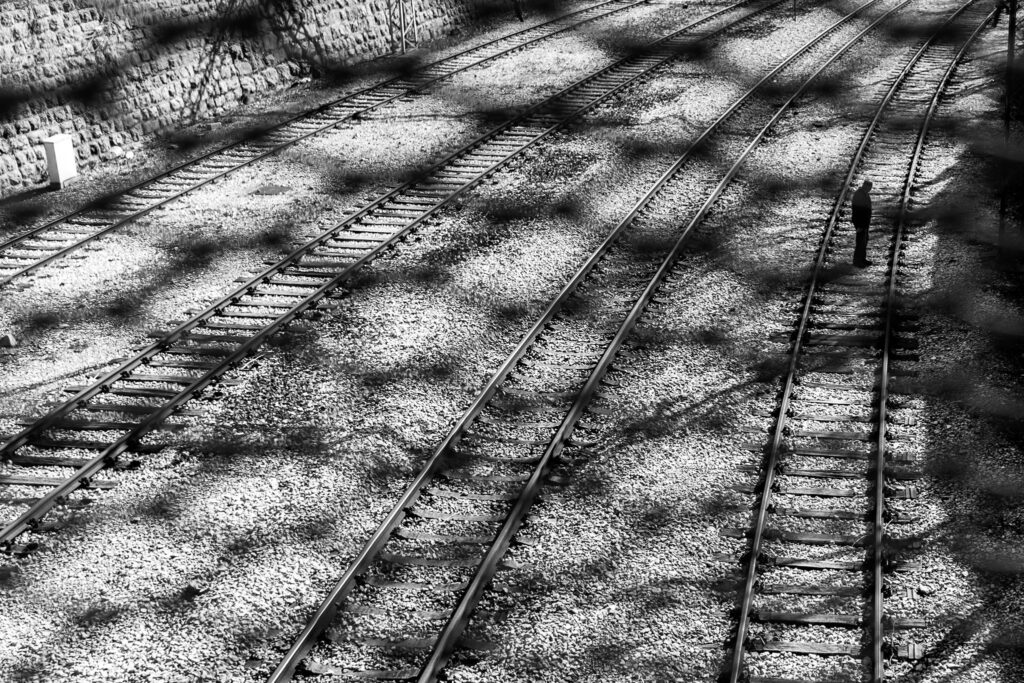
Photo:© Igor Čoko
Exhibition: “Book of Scars Retrospective” by Igor Čoko and Slaven Rašković
War photography, by its nature and primary function, simply cannot escape its essential and inherent weakness. While it strives to achieve and balance between the artistic and the factual – both equally important – every war photograph is left to the mercy of interpretation, manipulation, insertion into context, and propagandistic abuse. There is no frame, photographic explicitness, or content that cannot be completely distorted by manipulative accompanying text and immersion into a tendentious context, to the point that it takes on a meaning often completely opposite to what is actually depicted in the photograph. Precisely because of all this, it is necessary to be fully aware of one’s interpretative position when compiling a war photo monograph like this. Edition Book of scars is certainly no exception. The basic idea from which this series of photographic stories emerged is twofold: on one hand, the preservation of some of the most important war photo archives of renowned photographers, which without publication would very easily remain largely unknown and inaccessible to the public; and on the other hand, the use of photography as an artistic means aimed at demystifying and dismantling dominant national myths. By respecting the nature of the artistic factual artefact, directly, immediately, and factually supported, these stories attempt to step outside the framework of a culture of memory serving the national myth, as one of the key instruments of manipulating recent history in the territories of the former Yugoslavia, and to reveal all the evil and ongoing destruction of our wars. “Life in Limbo – The Book of Scars” edition currently consists of four stories, completely different, yet connected by the common idea mentioned above.
Life in Limbo, by authors Igor Čoko and Slaven Rašković, is a story about Knin. A photographic-essayistic documentary attempt to catalogue the traumas and scars experienced by a social community. This book is an attempt to make at least a small contribution to documenting the ugliest and most difficult events and occurrences from recent history in one place, based on facts and without pointing fingers. Events as traumas and scars, rather than accusations and grievances.
Freedom to the ground, by author Miloš Cvetković, is a reflection on the fall of Vukovar on November 18, 1991, that is, “the day we triumphantly celebrated one of the greatest human and moral defeats in recent history and failed the test of patriotism and love of country.” The book, a photo-chronicle of the absurdity of war and human destruction, contains 83 photographs that Cvetković took from late spring 1991 until the entry and immediately after the entry of the JNA and paramilitary units into Vukovar on November 18 of the same year.
My Bosnia, by author Miloš Cvetković, is a book about the war in Bosnia and Herzegovina, specifically the parts of it that Miloš Cvetković managed to capture through his photographic pilgrimages. His photographs cover the period from 1992 to 1995, primarily focusing on eastern, western, and central Bosnia, but the book also contains several photographs from Montenegro and Croatia, where some people from Bosnia and Herzegovina ended up as refugees, as well as Serbia, where they ended up as prisoners. This is not a comprehensive book about the war in Bosnia, but rather the perspective of a war photographer who only had access to one side of the war.
House for Sale presents a selection of the most important photographs taken by Imre Szabó on his first photographic assignment in Kosovo in 1981, probably without even realizing that this was the initial act in creating one of the most important photo archives of Kosovo from 1981 to 2001. Imre’s photographs cover almost all of the most important social events of that turbulent period of time.
Exhibition: “Where Hope Survives” - by Agron Dragaj
/ 21.10.2025 / 18:00 / Kosova National Library /
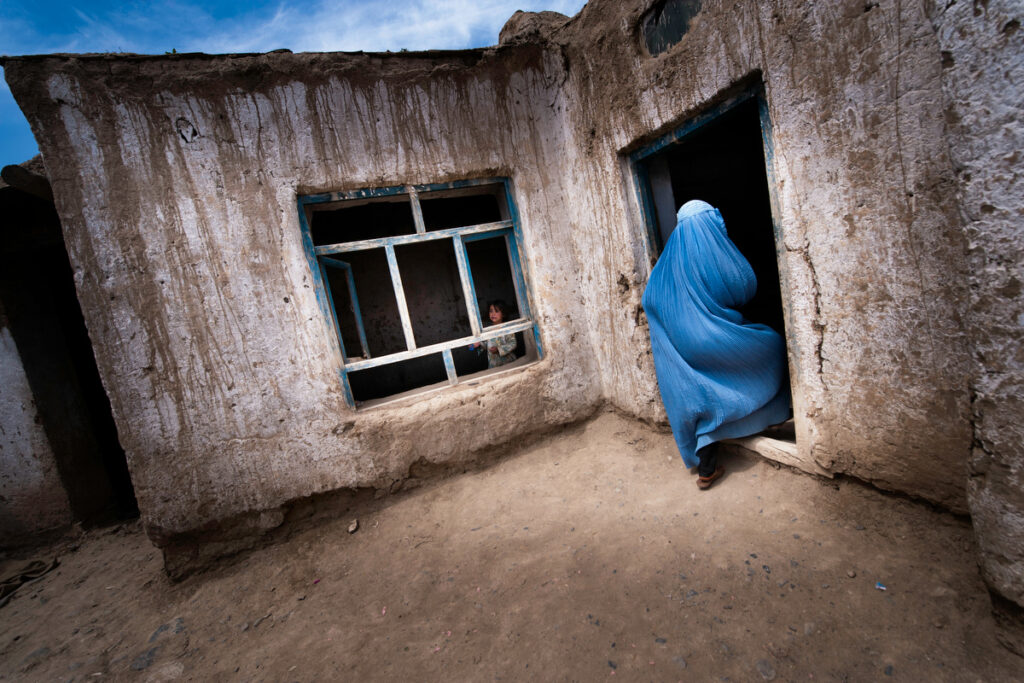
Photo: © Agron Dragaj – Afghani woman walks into a building in Kabul, Afghanistan.
Exhibition: “Where Hope Survives” – by Agron Dragaj
For twenty-five years, Agron Dragaj has photographed the fragile lines where conflict, disaster, and survival meet. His lens has moved from Kosovo’s post-war to war-torn Afghanistan, from the deserts of Mauritania to the frontlines of Ukraine, from Sri Lanka’s burned villages to the storm-ravaged Philippines, from Nepal’s brick kilns to the shelters of Thailand. What emerges is not a chronicle of war alone, but a portrait of human endurance. These images reveal children scarred yet unbroken, families uprooted yet holding on, voices silenced yet remembered. They testify to memory that survives violence, to resilience that defies despair, and to a shared humanity that persists against all odds. This work is not an archive of devastation, but a testimony to resilience, memory, and survival.
AGRON DRAGAJ
Agron Dragaj is a photographer and filmmaker originally from Kosovo, currently based in Morocco. Over the past 25 years, he has worked internationally, with a focus on stories of conflict, displacement, migration, natural disasters and human resilience. His work bridges photojournalism and long-term documentary, capturing both large historical events and the everyday lives of people navigating change. Dragaj creates images that are both intimate and universal, bearing witness to endurance, fracture, and hope.
Exhibition: "The Children of War" by Osman Demiri
/ 17.10.2025 / 18:00 / Grand 3rd Floor/
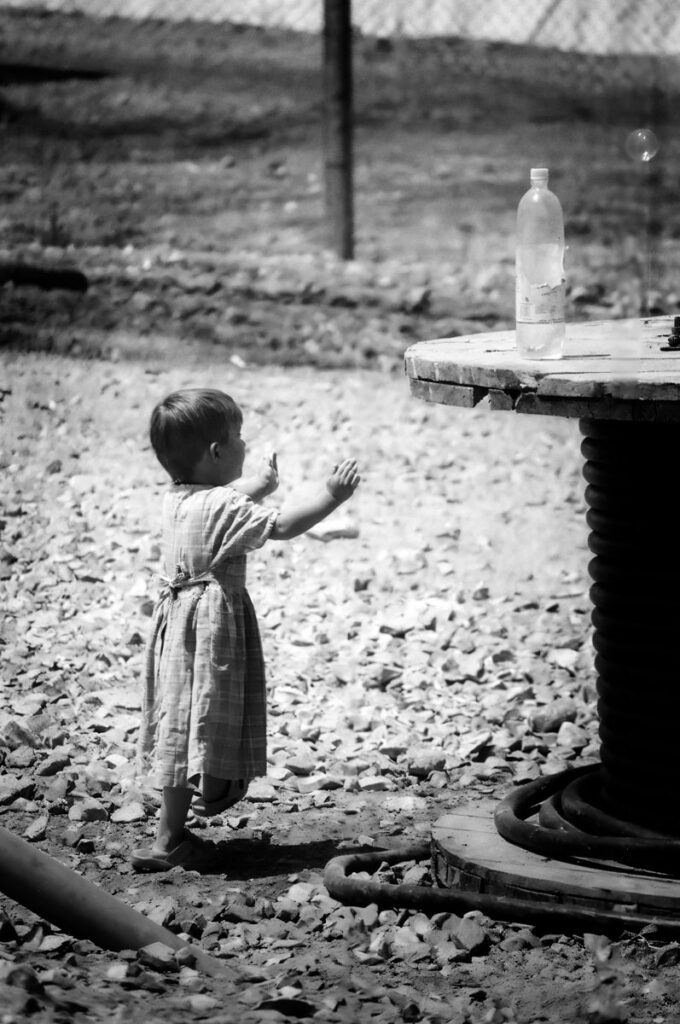
Photo: © Osman Demiri
Exhibition: “The Children of War” – by Osman Demiri
The Children of War, an exhibition by photographer Osman Demiri, presents a powerful visual testimony from one of the darkest chapters in Kosova’s recent history. Through intimate and evocative photographs taken in 1999 at the refugee camp in Çegran, North Macedonia, the exhibition focuses on the lives of Kosovar children who, in the midst of war and displacement, took their first steps in a world that received them without roots, but not without light. These images are more than a record of survival. They are a quiet meditation on human resilience and the unrelenting will to move forward, even when the ground beneath is uncertain. In the refugee camp of Çegran, thousands of children began their journey in a reality shaped by exile, yet marked by the enduring flame of hope. In Demiri’s lens, children appear not only as victims of war, but as seeds of a future planted among ruins, seeking light, growing through time. Their shy smiles, wide questioning eyes, and innocent games played between laundry lines strung like flags of a stolen childhood, all carry the invisible weight of survival, not through strength, but through a purity that refuses to fade. Children do not recognize the boundaries of destruction. They do not accept ruin as an end, but as a blank space to be filled with paper clouds, pebble treasures, and the courage to dream. The aim of this collection was to shift the focus away from the surrounding horror and devastation, and toward the only source of hope that remained: the children. What has been written or spoken so far about the fate of Kosovar refugees is but a drop in the ocean compared to the depth of their suffering. Among them, it was the children who bore the greatest burden. Their world was overturned the moment they fled into the unknown. The traumas they endured will remain as unhealed scars etched into their young souls. Many of them took their very first steps in a refugee camp, and by doing so, became living symbols of national survival Kosova’s only true wealth in those moments of despair and uncertainty. This was the essence captured in The Children of War, at a time when Kosova still smelled of smoke and fire, when the dreams of its people floated restlessly at the crossroads of the world, hoping for a return home.
OSMAN DEMIRI
Osman Demiri is a visual artist, photographer, and art curator, holding a Master’s degree in Visual Arts. He teaches photography at the University of Tetova and has worked extensively in film, serving as Director of Photography for feature films such as Marathona, Veprimet, Ditar, and the documentaries My Village and A Sip for Freedom. He is also the director of the short films Heroes and The Road. Demiri is the president of the Draudacum Association of Visual Artists in North Macedonia and the founder of KULT Art Gallery. He has served as a jury member and curator in numerous photography competitions and exhibitions across North Macedonia, Albania, Kosovo, Serbia, Turkey, and Bulgaria. As the author of numerous exhibitions and artistic projects, Demiri’s work reflects a deep commitment to documenting memory, identity, and the human condition through visual storytelling. He currently lives and works in North Macedonia.
Exhibition: "The Icons of Opium" by Lauresha Basha and Elton Hatibi / 17.10.2025 / 18:00 / Grand 3rd Floor /
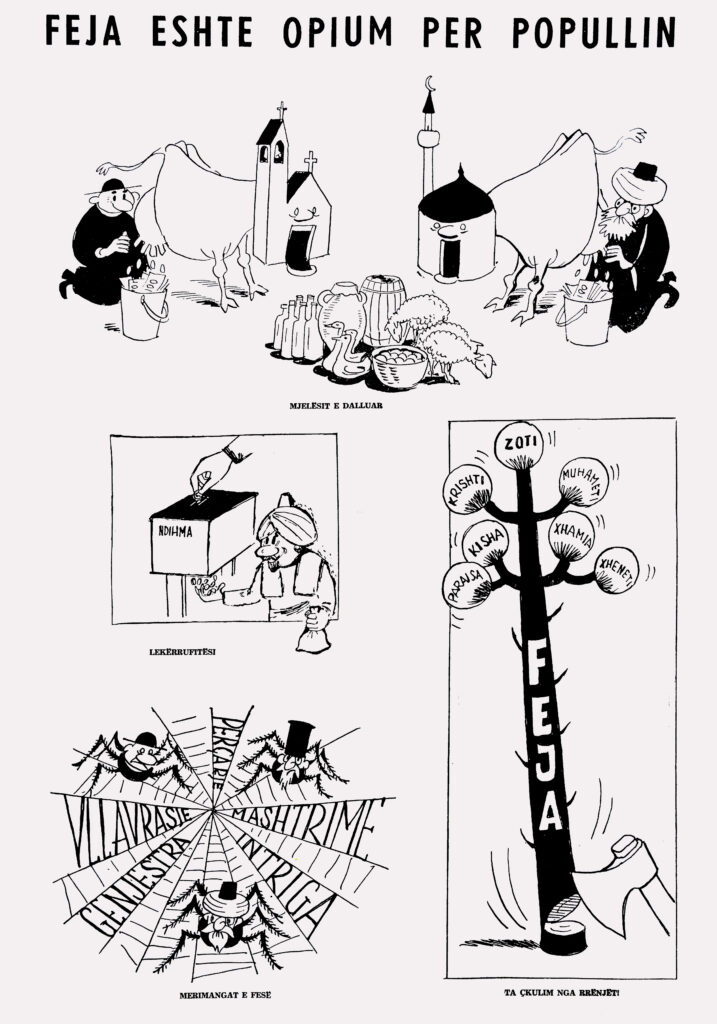
Exhibition: “The Icons of Opium” – Curated by Lauresha Basha, Idea and Essay by Doan Dani, Produced by Elton Hatibi – Konak Institute
Antireligious Graphics of the Regime / Antireligious Graphics under Communism
Through a selection of illustrations published in daily and periodical press, this exhibition presents a perspective on the function, use, and communication of both antireligious and sacralizing graphics produced by the Albanian communist regime during the three decades spanning from the sanctioning of secularism (1946) to state atheism (1976). The common denominator of this visual production is the creation of religious “masks,” primarily through parody and caricature, and the standardization of a collective perception shaped by the messages of visual semantics. Constant circulation in the press and in the pedagogy of mass organizations, the monopoly of discourse, and the simplicity and directness of the message made it possible for these masks to transform into iconic images, so much so that they continued to dominate interpretive categories even after the fall of the regime. From a thematic point of view, the illustrations highlight two distinct phases that emerge in the early 1960s. The first, coinciding with the implementation of secularizing policies and strategies of mass control, is characterized by graphics denouncing religious practices, authorities, and traditions. In the second phase, when militant atheism was activated as an antireligious tool, religion itself became the preferred target, at the very moment when power sought to invest in controlling the individual. As a result, all the earlier “masks”, perversion, violence, obscurantism, parasitism, opportunism, ignorance, manipulation, as well as geopolitical and geocultural conflicts came to clearly identify religion, along with its layers of vocabulary, clothing, food, customs, tastes, and, of course, anthroponymy. Since nature admits no void, the public shrinking of traditional religions was compensated by the “isotopes” of socialist order, and the graphics developed dialectically. The content of these illustrations thus goes beyond the antireligious register, accompanied by the regime’s own masks: emancipation, salvation, progress, materialist worldview, science, or the “new man,” all of which opposed metaphysics, triumphed over it, and created a collective language and imagination. Even when absent as concrete images, they manifested through slogans, commentaries, anecdotes, parodies, or elaborations with academic ambition, or simply within the context of the medium, so that the public could easily perceive the embodiment of the Good or the Truth in the authorities of the regime. The function and use of these graphics were also shaped by the relationship between medium and audience. Created as a “satirical sheet” in 1945 by the Ministry of Press, Propaganda, and Popular Culture, the magazine Hosteni distinguished itself for the quality and continuity of its antireligious graphics, though its readership was more individual and filtered. In contrast, Vatra e Kulturës, despite its calibrated print run, disseminated graphics more widely than any other magazine, spreading them into the rural corners of the country. Serving as a propaganda manual within the capillary network of cultural centers, it not only offered scripts but also generated its own audience. Meanwhile, the youth press (Zëri i Rinisë, Pionieri, Fatosi), addressing a generation fully shaped under the regime’s social engineering, projected the message into the future. And it was precisely from this disenchanted generation that the elites emerged who later guided Albania’s transition. Essay by Doan Dani
Exhibition: "Together, We Can" curated by Fotoist Curatorial Team, in cooperation with Engjëll Berisha and Lendina Balaj
/ 17.10.2025 / 18:00 / Grand 7th Floor /
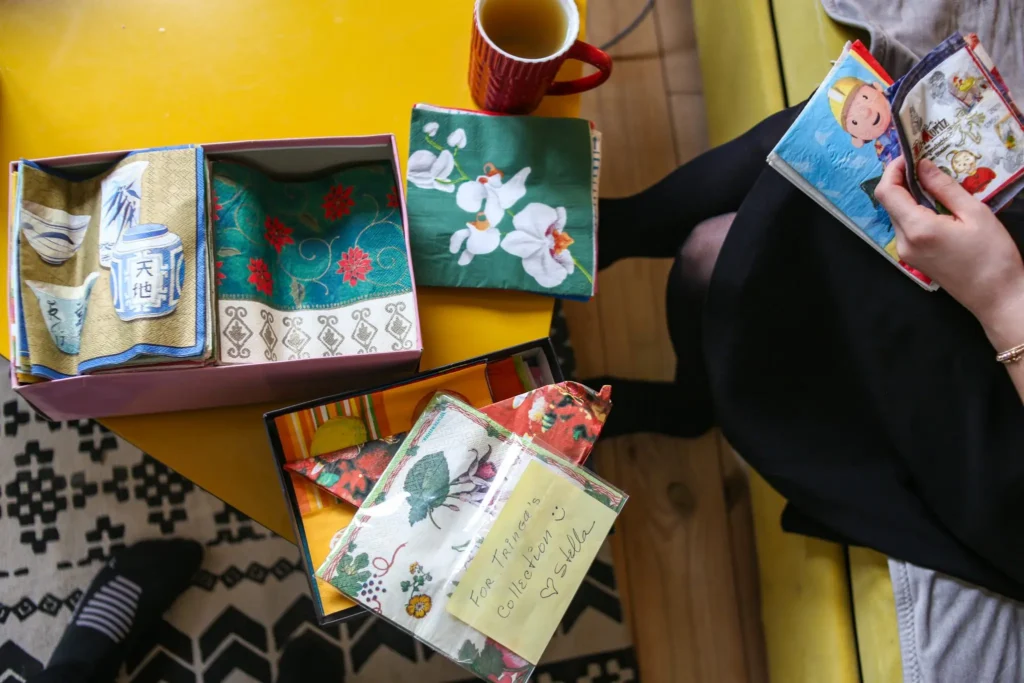
Photo: © Elena Gallina
Exhibition: “Together We Can” – Curated by FOTOIST Curatorial Team in cooperation with Engjëll Berisha and Lendina Balaj
Together We Can
FOTOIST – International Photography Festival presents Together We Can, a photography exhibition born from an open call dedicated to intercultural dialogue, inclusivity, disability rights, and gender equality. This platform brings forward diverse voices—young photographers, persons with disabilities, and artists from non-majority communities—who use the camera not only to document but to challenge, question, and reimagine the world we share. The exhibition reflects on the urgent need for connectedness and collective action. In Elena Gallina’s Çiknia – Our Girlhood, photography intertwines with textile traditions to explore memory, resilience, and joy in the everyday lives of Kosovar women. Drawing on the unique custom of napkin trading passed down through generations, Gallina weaves together images and oral histories that honor tenderness, intimacy, and feminine creativity. Rather than reducing women to stories of hardship, her work illuminates the beauty of connection, belonging, and continuity, reminding us that joy itself can be a form of resistance. In Denis Jagdji’s series, the paradox of a hyperconnected world unfolds, one where information flows instantly through wires and satellites, yet people often fail to truly see those beside them. His work reminds us that genuine connection is not technological, but human: a presence that anchors us in freedom, wholeness, and belonging. Veselj Saliji’s project, The Aesthetics of Critique, confronts consumer culture through the language of graphic design. Using irony and visual provocation, Saliji exposes how advertising and commercialization shape identities, values, and even art itself. His minimalist yet charged images invite us to reflect on the fragile boundaries between education, consumerism, and cultural meaning. With Suer Celina’s series, Echoes of Resistance, the streets of Prishtina become a stage where women protest and celebrate March 8. In stark black and white, Celina captures voices that refuse silence, voices demanding equality not as a gift but as a right to be claimed. His images cut through symbolic gestures and staged ceremonies, exposing the gap between political promises and women’s lived realities. Through these diverse perspectives, along with Valjeta Zuka’s intimate portraits, the exhibition insists that photography is more than an image: it is a dialogue, a bridge, a form of resistance and hope. Together, these works ask us to see beyond differences, to recognize our shared struggles, and to affirm that only together can we move toward justice, inclusion, and change.
“Çiknia – Girlhood” by Elena Gallina
Curated by Engjëll Berisha
FOTOIST International Photography Festival in Prishtina proudly presents Çiknia – Girlhood, a photographic and textile-based exhibition by documentary photographer and researcher Elena Gallina. A Rhodes Scholar who studied at Oxford (2019–2022), Gallina grew up in Kosovo in the aftermath of the 1999 war. Her artistic practice is rooted in challenging power imbalances, exploring post-war reconstruction, and amplifying women’s voices from within their own lived realities. Çiknia is both a deeply personal and collective story. The exhibition draws inspiration from Kosovo’s unique tradition of napkin trading, a practice passed down through generations of women: grandmothers, mothers, daughters, sisters, and friends. These collections of colourful, delicate napkins, exchanged and safeguarded in households since the 1960s, became treasured symbols of joy, intimacy, and resilience. Even after the war, when many homes and collections were destroyed, women began again, helping their daughters rebuild small archives of light-hearted beauty “just for us.” Through photography and recorded reflections, Gallina weaves together narratives of memory, girlhood, and womanhood. The work resists the tendency to define women solely through hardship or violence. Instead, it invites women to articulate what femininity and belonging mean to them, then, now, and into the future. The result is a celebration of colour, tenderness, and the everyday beauty of women’s ways of living, connecting, and creating joy amidst adversity. Visitors are invited to step into this intimate archive of memory and play, where simple objects such as paper napkins become profound carriers of history, resilience, and feminine love. Çiknia is both a remembrance and a celebration, a space to reflect on the enduring power of women’s joy.
Elena Gallina is a documentary photographer and economic researcher whose work centers on feminist development. Having grown up in Kosovo in the aftermath of the 1999 war and later working in refugee camps across Jordan and Palestine, she has developed an artistic practice inspired by the quiet, often overlooked moments within over-sensationalized environments. Her photography seeks out stillness, guided by the belief that colour and beauty illuminate deeper truths. A Rhodes Scholar, Gallina earned an MSc in Economic and Social History and an MBA at Oxford, and in 2024 was the Artist-in-Residence for the Rhodes Trust. During that time she also served as Economic Theorist for Cultural Heritage Without Borders–Kosovo, advising on the creation of a cultural districts database. During her residency, Gallina has been documenting girlhood in Kosovo, tracing its textures and traditions from the 1960s through the early 2000s. Her photographic methodology is profoundly co-creative: to counter historic power imbalances between photographer and subject, Gallina engages portrait-making as a shared process, allowing women to arrange themselves, select images, and be photographed in their own spaces. Passionate about anti-classist art, she views storytelling as a powerful tool to shift moral consciousness and expand collective imagination.
Engjëll Berisha is a versatile cultural professional with a decade of experience as a journalist, artist, and curator. Over the past four years, he has served as General Coordinator at the National Gallery of Kosovo, where he has been central to the institution’s programs and operations. In 2019, he was Assistant Commissioner and Coordinator of the Pavilion of the Republic of Kosovo at the 58th Venice Biennale, working on Alban Muja’s acclaimed project Family Album. His multidisciplinary background and curatorial practice continue to shape and strengthen the contemporary art scene in Kosovo.
“Connected To What?” by Denis Jagdji
What are you connected to? What wakes you each morning with new opportunities, new freedoms, and new life? What sustains you when your energy runs low? What inspires you to lean in, to move forward, and to find a place of safety? With this series of photographs, Denis Jagdji explores the paradox of our hyperconnected world. We live wrapped in wires, surrounded by satellites and technologies so advanced that information travels across the globe in an instant, yet so often we fail to truly see the people right beside us, the ones we actually know. What if we remembered that we are connected, infinitely, regardless of what we do or fail to do? Always connected, always plugged in. But being plugged in does not guarantee that energy flows with purpose. It does not ensure that connection is alive, intentional, or real. Jagdzi’s photographs remind us that true connectedness is not about technology but about presence. It is about anchoring ourselves in freedom, wholeness, and safety, by connecting with the ones already connected to us, choosing us, loving us.
Denis Jagdji – was born in 1996 in Prizren and is originally from the village of Brod, Gora. He graduated in Photography from the Department of Photography at the International University of Audiovisual Arts Europa Prima in Skopje. His first solo exhibition, Portrait of the City (2019), was presented at the National Gallery of North Macedonia – Mala Stanica, as part of his BA studies. His second solo exhibition, Parallel Worlds, was shown at the Suli An Gallery in Skopje in 2023. Jagdji’s work has also been featured in several group exhibitions, including Artecology (2021), the 32nd session of the Galichnik Art Colony (Skopje, 2021), Fotosofia (Zagreb, 2019), Identity (Dortmund, 2018; Skopje, 2018), Skopje Kreativa (2017), and Themes from My Country – Macedonia (Skopje, 2018).
“Echoes of Resistance” by Suer Celina
On the streets of Prishtina, the voices of women rise like echoes against walls that have tried too long to silence them. Each step in the march carries the weight of untold stories, of doors closed, jobs denied, and voices cut short in meetings and in homes. In Kosovo, to be a woman too often means carrying a double burden: to live and to resist. Sexism is not only insult or threat, it hides in expectations that women must remain quiet, patient, grateful for less. It hides in the belief that their bodies are open for judgment, their choices paths for others to decide. Here, in the black and white photographs of Suer Celina, that silence is broken. In raised banners and lifted hands, in gazes that refuse to turn away, women name the truth: equality is never gifted, it must be claimed. Stripped of color, these images are full of force, reminding us that even in the starkest contrasts, resistance shines. Every year on March 8, the state dresses itself in symbols. Flowers hang on institutional doors, speeches bloom with empty promises, captions overflow with borrowed words. Women are praised as “our mothers, our sisters, our daughters”, as if they exist only in relation to others. These polished gestures stand in cruel contrast to daily reality: justice for survivors of violence is delayed, wages remain unequal, decision-making tables are still built for men. The state offers roses but not protection, ceremonies but not support, applause but not change. Buildings are painted orange, logos glow bright, stages are decorated, yet little in women’s lives truly shifts. As Canadian photographer Ted Grant once said: “When you photograph people in color, you photograph their clothes. But when you photograph people in black and white, you photograph their souls.” In these images, with color stripped away, the soul of resistance is revealed.
Text by Lendina Balaj
Suer Celina is a Kosovar journalist and photographer. A graduate of journalism, he has worked with Anadolu Agency, DokuFest, and Depo Photos, with his photographs published in numerous national and international newspapers. In 2013, his black-and-white series was selected among the year’s best works by VSCO. He has been shortlisted for the Sony World Photography Awards in 2023, 2024, and 2025, and featured in LensCulture’s Editor’s Choice. Celina has held solo exhibitions in Çanakkale, İzmir, and at the Bursa International Photography Festival, and has participated in group shows in Turkey, North Macedonia, the United Kingdom, and Denmark. He is the co-founder and former Editor-in-Chief ofPrizma Mediumnewspaper in Kosovo, a member of the organizing team of the FOTOIST – International Photography Festival in Prishtina, and an alumnus of VII Academy.
Lendina Balaj is a Kosovar journalist and human rights advocate. At the age of 17, she co-organized a protest against sexual harassment in high schools of Prishtina, marking the beginning of her public activism. She has since worked on media and cultural projects, including leading the Bonu Gru campaign, which focused on gender equality and social change. She holds a degree in Journalism, a master’s degree in Public Relations from the University of Prishtina, and is currently pursuing a master’s in Multimedia Art at FH Salzburg. Alongside her academic work, she produces multimedia projects that bring together advocacy, creativity, and storytelling. Her work highlights the role of media and art in amplifying voices and creating more inclusive narratives.
“The Aesthetics of Critique” by Veselj Saliji
Veselj Saliji’s project: The Aesthetics of Critique explores the intersections of graphic design, socially engaged art, and critical reflection on contemporary society. Rooted in an inquiry into consumer culture, Saliji uses irony, provocation, and minimalist aesthetics to question how marketing and commercialization shape our everyday lives, identities, and public spaces. Through his images, he challenges viewers to confront the role of media and advertising in constructing our perception of the world and our understanding of art itself. Balancing visual simplicity with conceptual depth, Saliji creates a space where paradoxes of education, consumerism, and cultural values collide, inviting us to reflect on the fragile boundaries between design, art, and ideology.
Veselj Saliji (b. 2001, Vranje) is a graphic design student at the Faculty of Applied Arts, University of Arts in Belgrade. Originally from Kamenica, Kosovo, he actively participates in art projects, colonies, and exhibitions across the region and internationally. He has presented several solo exhibitions, including Portraits (2019), Anomie (2021), Brendalism (2024), and Self-reflection (2025). His works have also been shown in numerous group exhibitions, festivals, and international poster biennials in Europe, Asia, and the United States. Saliji is the founder of the NGO Alternative Cultural Tendency and a collaborator with IS Petnica’s design seminar. His work has received multiple national and international awards, as well as prestigious scholarships for highly talented students.
“Through the Blur” by Valjeta Zuka
Valjeta Zuka’s series of intimate portraits reveals photography as something far beyond a visual record: it becomes a dialogue, a fragile bridge between the seen and the unseen, a quiet act of resistance, and a gesture of hope. The portraits, captured through layers of blur, dissolve the boundaries of realism and open a surreal space where faces emerge as if suspended in memory, dream, or reflection. In this tension, between concealment and revelation, fragility and endurance, Zuka invites us to reconsider how we see one another, and how images themselves can embody both vulnerability and strength. These blurred yet breathing portraits remind us that photography is never just an image, it is a way of speaking, listening, and reaching across distances that seem impossible to cross.
Valjeta Zuka is a visual artist and photographer, holding a Master’s degree in Design and Visual Arts. Her practice centers on abstract portraiture, where she experiments with form, texture, and visual distortion to explore themes of identity, intimacy, and perception. Through her lens, portraits transcend representation, becoming poetic reflections of inner states and collective memory. Beyond her artistic work, she engages in community-based projects and collaborative exhibitions, often focusing on inclusion and social dialogue. By merging design, photography, and abstract expression, Valjeta creates images that both challenge and invite viewers to see beyond the surface, opening space for empathy, awareness, and connection.
